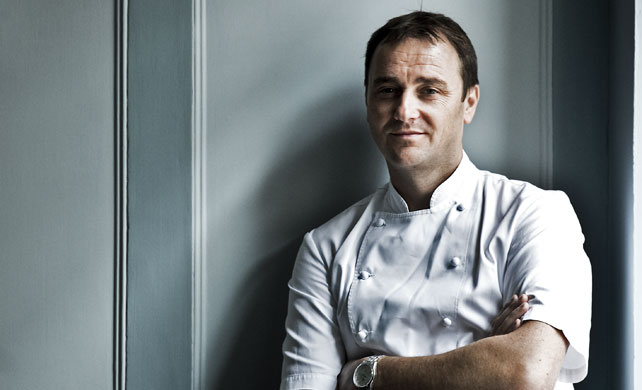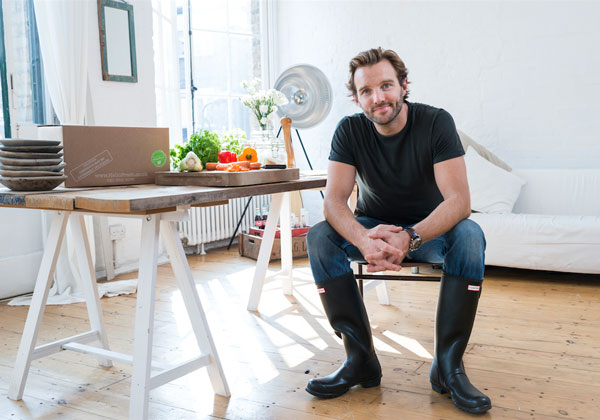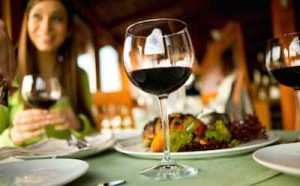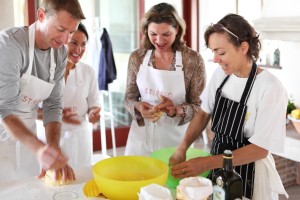 ABERDEENSHIRE baker Bee Berrie has got herself a great career booster.
ABERDEENSHIRE baker Bee Berrie has got herself a great career booster.
The Scotch firebrand’s sweet treats have been recognised by none other than Jamie Oliver – who has enlisted her to provide recipes for his website.
The former scientist who swapped bacteria for biscuits has risen to become one of the country’s best bakers.
Bee gave up her career in the pharmaceutical industry to set up her own company, Bee’s Bakery, using her great-gran’s treasured shortbread recipe to create her own quirky version of jammy dodgers. Now her company now employ six staff at her industrial kitchen unit in west London.
Just three years on from launching her business full-time, celebrity chef Oliver has called her “brilliant” and recruited her to write recipes for his website.
Her list of high-profile clients include Harrods, Ralph Lauren, Kurt Geiger, Adidas, Harvey Nichols, Topshop and Selfridges.
Bee, 34, who grew up in Macduff, Aberdeenshire, said: “I’ve always loved all sorts of cooking, including baking, but at school I really enjoyed biology and looking through microscopes so ended up studying micro-biology instead.
“I liked the job I went into – it was a real brain-box job with a good salary and all that goes with it – but deep down I always wanted to be more creative.
“I loved cooking and baking so started thinking about what little niche I could create for myself and came up with the idea of jammie dodgers but with a cheeky little twist of having words cut out on them.
“Now I’m making all sorts of different biscuits, gingerbread, wedding cakes and anything else I am asked to do.
“I’ve been on telly with Heston Blumenthal, I write for Jamie Oliver’s website, I’ve got an amazing list of clients and I’m just about to bring out my own recipe book.”
Bee added: “Because of my name, sometimes I do get asked if I am related to Mary Berry. I met her once when I was waitressing a couple of years ago and told her I was hot on her heels. It’s time for a new baking Berrie on the scene.”
Bee jokes that her love of baking may never have developed had it not been for the hours she spent cooking to keep warm during harsh Scottish winters.
She added: “I don’t want it to sound like we were impoverished but it could get very cold up in the Moray Firth and there were times when we were snowed in that it was good to do baking just to keep cosy.
“My mum is not the keenest cook in the world but my great-granny Nisbet was a great cook and worked in service as the professional cook to the Fry family in Glasgow, who were part of the Fry’s Chocolate Cream dynasty.
“It is her shortbread recipe that I use in my jammie dodgers.”
Bee, who moved to England as a teenager, first started thinking about a career in baking after the company she worked for gave every employee a small personal development budget.
She used the money to sign up for a cake decoration evening class and soon started making wedding cakes for friends.
She said: “I picked up a few tricks of the trade, I watched videos on the internet and then I even took a three-month sabbatical from work to do some proper work experience in the industry.
“I started making wedding cakes for people but I also started using every spare minute baking and setting up my own business.
“I wanted to focus on a product I could sell in lots of different ways and initially decided to go with jammie dodgers.
“I’ve always been interested in design and typography and I had some little alphabet cutters so started messing around cutting out words on the top of the biscuit.
“I started off with words like ‘fun’, ‘yeh’, ‘lol’ and ‘omg’ but one morning my flatmate was being very grumpy and told me I should write cheeky rude words too.
“They looked quite fun and things just developed from there.”
Bee baked up large batches of her biscuits before taking them round her favourite coffee shops and delis near her home in London.
She admits it took more than a pinch of courage to approach companies with her products.
She said: “I’ve always been of the attitude that things don’t come to you – you have to push for them to happen.
“I started off loading up my backpack with boxes of biscuits and taking them to coffee shops I loved. I had a Vespa and used to scoot about doing deliveries before heading to work.”
Bee found out which buyer she needed to see at Selfridges and stood at the staff entrance until spotting her and presenting her with a box of biscuits.
At Harrods, she claimed to have a personal delivery for the senior bakery buyer and was shocked when the receptionist called the buyer to come down to accept the gift in person.
She said: “I did worry that I might get arrested but I just had to be brave, apologise for taking up her time and then give her my biscuits.
“It is such an awkward thing to do but you do need to put yourself out there and sell yourself as well as your product.
“I got a call the next day saying they would take my biscuits.”
Bee gave up her science career in 2012 and since then has worked full-time growing Bee’s Bakery.
She started writing recipes for Jamie Oliver’s website after bumping into one of the site’s editors in a bar and pitching the idea of them running some of her biscuit recipes.
She has also appeared on TV and internet cookery shows.
They are currently baking up batches of more than 10,000 gingerbread biscuits a week for the Christmas rush.
As well as accepting commissions from corporate clients, she takes orders through her website and sells her biscuits and cakes via internet shopping sites Not On The High Street and Etsy.
She also enjoys making wedding cakes, often using brightly coloured edible flowers for decoration.
And she is looking forward to the launch of her book, Bee’s Brilliant Biscuits, in spring.
Bee, who recently got engaged, said: “I love that I have gone from bacteria to baking.
“I think being a scientist has definitely helped me when it comes to having patience and attention to detail – and it goes without saying that I always pass my health and hygiene checks.
“Running a bakery business is not all pink pinnies and listening to Radio Four – it’s long hours and very hard work.
“But I feel so lucky to be doing what I do and I’m looking forward to the future.”












